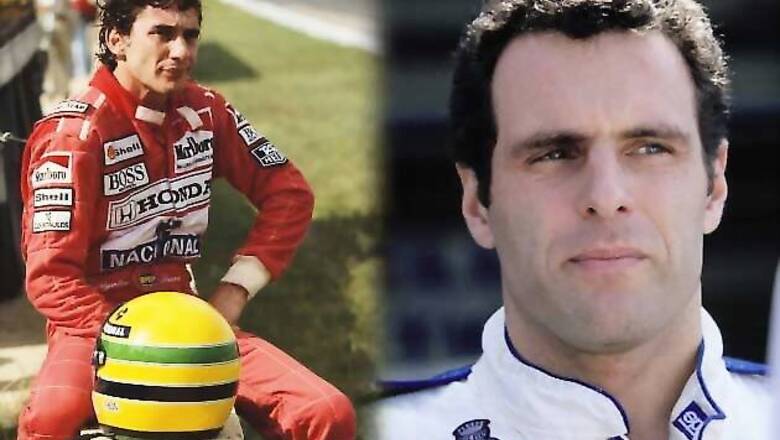
views
The deaths of Ayrton Senna and Roland Ratzenberger at the San Marino Grand Prix in 1994 were the last driver fatalities in Formula One, due largely to the safety review prompted by their deaths and ongoing measures to reduce the almost annual incidence of such tragedies in the series.
Here are the main F1 safety measures enacted since that time:
HEAD AND NECK SUPPORT
Senna died due to head injuries, and protection of the head and neck is the principal safety priority, as it is those traumas which are the most likely to cause death in the short time before on-track medical personnel can attend. Helmets are subject to testing to ensure they can withstand heavy impacts. The modern helmets are made of carbon fiber, Kevlar and polyethylene, and are fire resistant. The visor has removable strips which can be torn off if debris or liquid gets onto it, so the driver can retain a clear view. In 2003, F1 made compulsory the Head and Neck Support (HANS). The device, attached to the rear of the helmet and resting on the driver's shoulders, is connected to the interior of the cockpit adjacent to the safety-belt mounting. It prevents rapid and excessive head movement during accidents.
MAKING THE CARS SAFER
F1 cars are safer now than they have ever been, able to withstand extremely powerful impacts. Robert Kubica's terrifying crash at the Canadian Grand Prix in 2007 was evidence of just how much the cars can withstand. The Pole sustained only minor injuries from a collision with a trackside wall that was heavier in impact than Senna's at Imola. Most focus has been on the literally named "survival cell," which is the area in front of the engine and surrounding the driver. Made of light but very strong carbon fiber, they are designed to resist both impacts and penetration by the sharp debris created in accidents. The opening of the cockpit has also been forcibly increased in recent years, to prevent drivers being trapped inside during fires, and enable safer and easier removal of injured drivers. Crash tests have been made more rigorous, showing cars can withstand impacts from all directions. Tethers prevent wheels detaching during accidents to protect other cars, trackside marshalls and spectators. Another key change has been the switch away from the old metal fuel tanks to hi-tech rubber-coated, fiber tanks which are much less likely to rupture in a crash, and therefore prevent fires.
EMERGENCY MEDICINE
Prof. Sid Watkins was the on-course doctor at the San Marino GP in 1994, and performed an emergency tracheotomy on Senna at trackside. It was a particularly tragic moment for Watkins, as he was a close friend of Senna, and he had done more to improve the series' safety than any person since entering F1 in the 1970s. It was at his insistence that many of the post-Senna medical improvements were made. The medical cars, with paramedics on board, are stationed around the circuits and can reach the site of any crash within 30 seconds. The state-of-the-art trackside medical center has a surgeon and other staff on site, and there are helicopters at every race to transport seriously injured drivers and personnel to nearby hospitals. F1 says there are an average of 130 medical staff at each race.
TRACK DESIGN
Gone are the days of straw bales and, for the most part, concrete walls on the edge of tracks. Modern circuit design puts a premium on safety. With the exception of Singapore's Marina Bay, which has the inherent restrictions of all street circuits, the new tracks designed since the 1990s have generous run-off areas at high-speed corners, unlike the Tamburello bend at Imola where Senna lost his life. The efficacy of trackside barriers has been greatly increased, and they are able to absorb most of the energy of a car crashing at high speed. Among the other trackside measures is the introduction of the safety car to slow the field while the scene of an accident is cleared or a stricken car removed. Pit lane speed limits have also been introduced and progressively lowered to prevent racing in an area full of team crews and trackside personnel.
SLOW PROGRESS
The relative safety of F1 compared to the past has evolved only slowly. It is staggering to the modern fan to realize how lax safety standards were in past eras. Helmets became compulsory only in 1953, fireproof overalls were first introduced in 1963, and seatbelts in 1972. Crash tests to show the cars can withstand impacts were introduced only in 1985. Three-time world champion Jackie Stewart was a strong advocate in the 1970s for improving safety standards, and his work, along with that of Sid Watkins, and the tragedies of Imola 1994 have vastly improved the series.



















Comments
0 comment